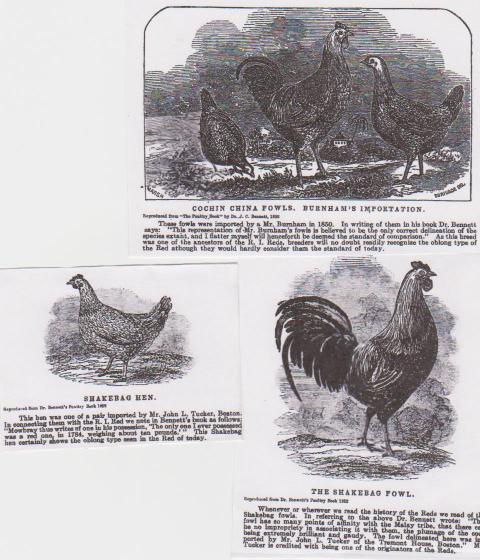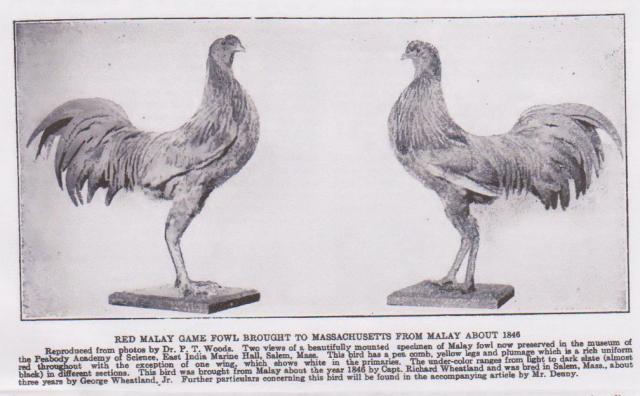I thought this might make for some good reading.
Here is some information on feeding chicks and growing stock by CHARLES HENRY HUBBARD,
1915.
FEEDING BABY CHICKS.
CHARLES HENRY HUBBARD, 1915
My method of feeding the chicks from the shell to the show room is as follows : After the chickens are hatched, I give them a rest for from 48 to 60 hours, before feeding them. For the next six weeks, they are fed three times a day on the following mixture of grains:
Three parts wheat bran,
Two parts wheat middlings,
One part rice flour.
Twelve parts of flaked or rolled oatmeal.
Twenty-four parts of hominy.
Never feed any meat or beef scraps of any kind for the first six weeks of feeding. For animal food, I use new milk, not skimmed, that has just come to a boil. The first week, use just enough hot milk to make the mash moist and crumbly. After the first week, use more milk, to make the feed a little more moist. Give them all they will eat in five minutes, taking away any that is left. If this system of feeding is followed very carefully for six weeks, the chickens will grow very rapidly. Their digestion will not be overtaxed and they will be able to stand a little heavier feed without poor results. For green food cut a piece of sod and put it in their coop. They will enjoy scratching it to pieces to get the grass and roots. For the next six weeks I feed them five times a day. Use the same mixture as before, only this time add to it a few mashed potatoes. These potatoes should be cooked in water which contains a little salt. You will find that by adding the boiled potatoes to the mash, it will be much relished by the
chicks and it will make them grow much faster, which will pay you for the extra trouble of boiling them. Use this mash in the morning and evening. For the other three feeds use a scratch food, which is composed of wheat, cracked corn, and sprouted oats, which should be fed separately, not mixed together. As stated above, the first feed early in the morning should consist of mash, not all they will eat, but what is called a half-feed. Their next feed should be at nine o'clock, and should consist of wheat thrown in the litter, which will make them work to get it. This should also be a short feed.
At noon, they should be fed oats, which have been sprouted in the following manner:
Soak two quarts of oats in a pail of water for 24 hours.
Add 40 drops of tincture of iron to each pail.
Plant the oats in a warm sunny spot in a trench and cover with about three inches of dirt.
You will find that in from three to five days you will have the best chick feed that it is possible to get and one that is much relished by the chicks.
You not only get full value of the meat of the oats, but you get a great many tender roots and sprouts also. For their noon feed you should dig up some of the sprouted oats, dirt and all, and give them just as much as they will clean up. They will scratch and dig the sod to pieces and pick out every oat and root in it. You will find that the dirt which sticks to the roots of the oats is very good for the chicks, in fact, it keeps all the digestive organs in perfect working order. This way of sprouting oats is far ahead of any other method. If sprouting them in a box, which is the old method, you must be very careful that the box is clean and sweet, or the oats will sour and get slimy and will cause trouble by feeding. Their next feed should be at three o'clock. It should consist of cracked com thrown in the litter, and should never be more than they will clean up. At six o'clock they should be given mash the same as used in the morning, but instead of half a feed they should be fed all they can eat. Be sure to make their last feed the heaviest feed of the day, so that it will carry them through the night.
FEEDING GROWING CHICKS.
I have now told my method of feeding up to twelve weeks of age.
If you have followed this method very carefully you should have a flock of chickens that any man would be proud of, and a flock that has not been forced and whose digestive organs have never been overtaxed in any way. They should have made frame very fast and be uniform in size and a flock that is free from runts. After they are three months old I feed them a dry mash which consists of:
Wheat bran three parts.
Best grade beef scraps, one part.
Wheat middlings, two parts.
Hominy, twelve parts.
Flaked oatmeal, twenty-four parts.
I find that it is impossible to over-feed a growing chick for the next three months, so we must get all the gjrowth we can while the system will stand it. It took some time to find outhow long a growing chicken would stand forcing without doing it harm as a breeder, and at what age it would stand forcing best. This dry mash is kept before the growing chickens in hoppers, so that they can help themselves at any time. Be sure to place your hoppers where rain and sunshine cannot strike them. I use the Norwich Automatic Hoppers for my scratch feed, which consists of :
Wheat, corn and oats, equal parts,
one part wheat,
one part cracked corn,
one-half part best grade clipped oats,
one-half part flaked or rolled oats, mixed thoroughly.
These hoppers are placed in front of each brood coop. You will find that the chicks learn to work the hoppers in less than five minutes.
Now take a heart shaped hoe and make a trench ten to twelve feet long and from three to five inches deep in front of each brood coop. This I fill about half full with soaked oats and cover up with dirt, mixing the dirt with the oats. After this is done lay a board over them so the chickens can't dig them out before they start to sprout. At the end of four days take the board off, and dig up one end of the trench so that some oats will show. After the chickens see the oats, they will start to eat them and will dig out every oat in the trench. They will leave almost any other feed for the oats. This is one of the best secrets I have in getting large frame on the birds I grow. There is no other method of feeding known that will give a growing chick more exercise than to dig the oats from these trenches, and it is exercise that they enjoy. We feed sprouted oats in this manner almost the year around, even in our cold climate here in the east where the seasons are short.
There is no feed known that quite equals oats as a frame builder, and to keep a flock of chickens in good condition.
By feeding the ground grains and scratch feeds in hoppers and the oats in trenches the labor of caring for a flock of growing chicks is reduced to a minimum. The only hand feeding we do is to feed two mash feeds a day, one in the middle of the forenoon, the other in the middle of the afternoon. For this wet mash use the same mixture of grains used for the dry mash only omit the beef scraps. Give bone meal in its place. You can now cut out the milk used in mixing the mash for the first twelve weeks, and substitute fresh ground liver and water in its place, which you will find much cheaper and better. To prepare this mixture take one quart of finely ground beef liver and mix with seven quarts of cold water, stir water and liver until you have it thoroughly mixed. Use this liquid to mix your mash.
After you begin to feed this mash you can almost see them grow, and they will take on a plumage that is hard to beat in the show room. This is a secret worth knowing, as liver is
far superior to milk for producing plumage on show birds of the highest quality. This mash should be fed quite wet, as they will eat more of it if fed this way. Growing chickens will eat less during the hot months of July and August than at any other time in the year, and if you are not careful their growth is apt to be checked during these months, as they will drink more than they eat and will not
make frame as they should. We all know that if a growing chick gets a set back of any kind in the growing period, no matter from what cause, whether lice, worms, crowded quarters, filth or any other cause it never can win the blue in any large shows in hot competition. Therefore, I substitute the following for these two months:
Half a pail of flaked oatmeal.
Pour enough boiling water into this to fill the pail
Put a cover on and leave it until it is cool.
One quart of water to two quarts of cooked oatmeal water is given them to drink instead of clear water.
You will also find this a good substitute for milk for growing chicks. A common milk pan makes the best thing I ever tried for the oatmeal water. They are cheap and easily kept clean, and as they are shallow can be put under almost anything to keep them out of the sun. Never leave the drinking pans in the sun, for oatmeal water will soon sour and be rank poison to growing chicks. By using
oatmeal water in this way we don't have to worry if they don't eat as much as they should, as they are sure to drink more than usual during this hot spell, and the oatmeal in the water gives
us an even growth during these two months. By not eating so much in these months the digestive organs seem rested when the nights and days get cooler and for the next six weeks they will eat twice as much as at any other time during the growing period, and this is where we should force them in any way we can. Be sure to have plenty of sprouted oats in the trenches, for the more we make them exercise the more food they will digest, and if their two mash feeds are quite moist they will eat much more than if it is crumbly. Put plenty of charcoal in this mash and you will never have any trouble from feeding it moist. Only five parts water to one part liver should now be used, as this will produce feather growth and put on a finish for the show room. Keep up this method of feeding them until ten days before the show. My method of conditioning for the show room you will find on another page. Now, my dear readers, I have given you my secrets of growing a bird from the shell to the show room in six months, and have given you a system that has not stood a defeat in twelve years, and I have also given you a system that has defeated the best known in England, Canada, Australia, and the United States, and here is my proof, the winnings of the last three shows in Madison Square Garden.
Chris












